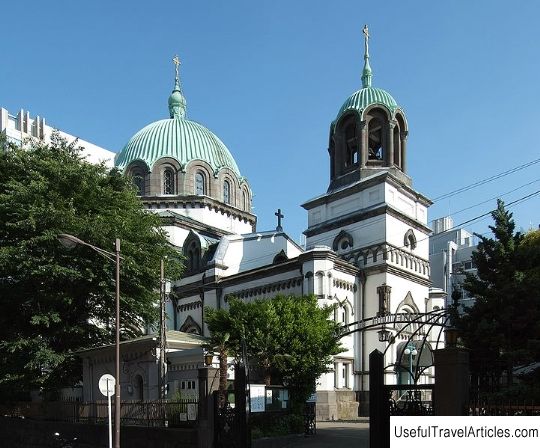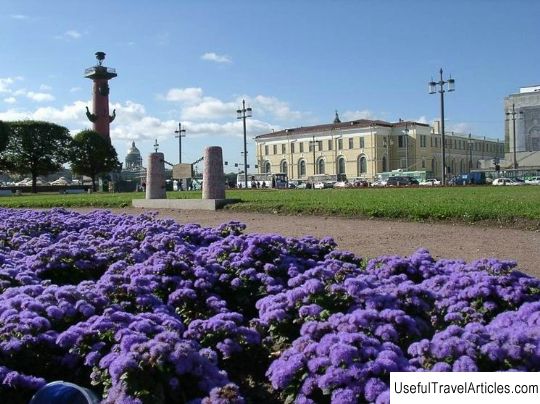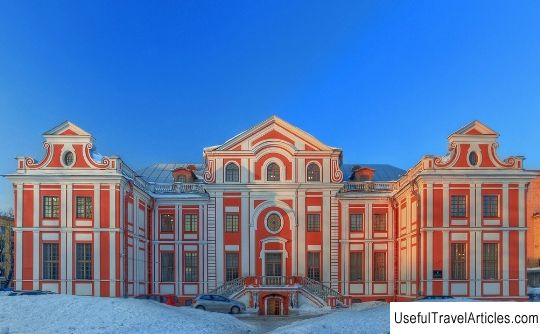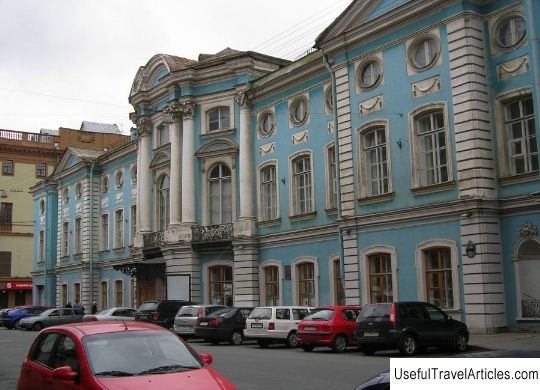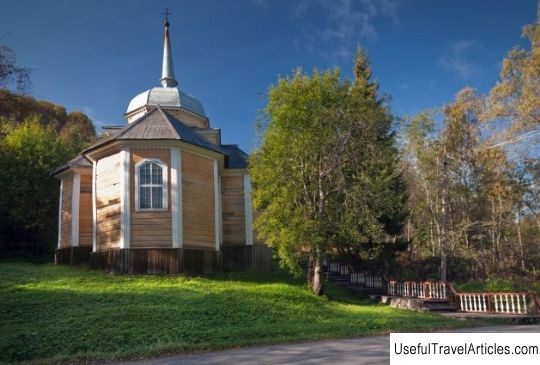Kunstkamera - Museum of Anthropology and Ethnography description and photos - Russia - St. Petersburg: St. Petersburg
Rating: 8,4/10 (5443 votes) 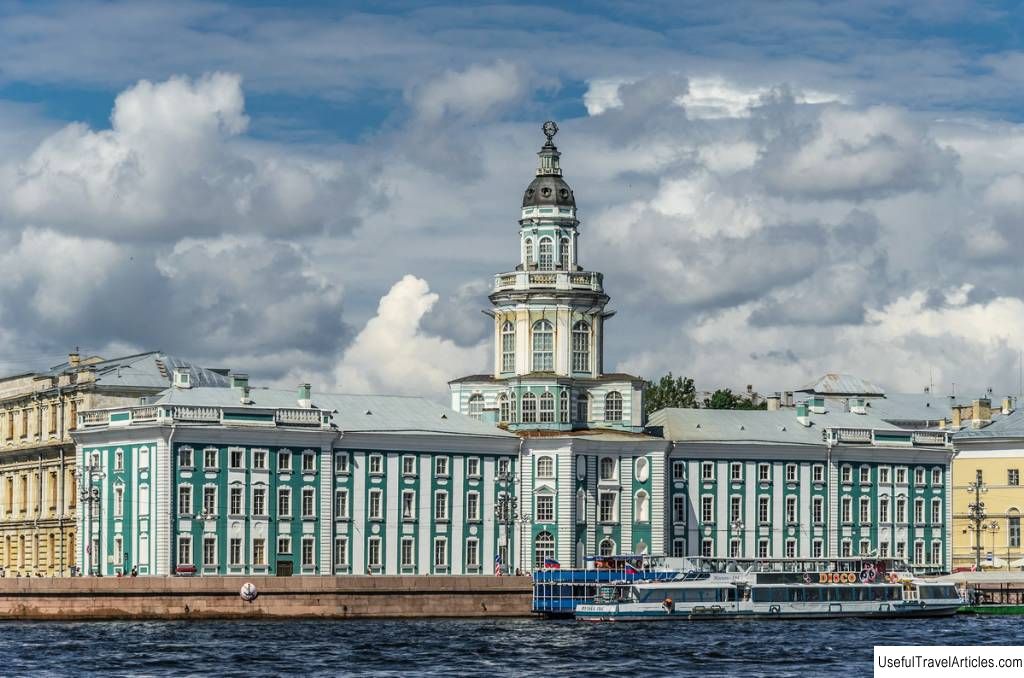
Kunstkamera - Museum of Anthropology and Ethnography description and photos - Russia - St. Petersburg: St. Petersburg. Detailed information about the attraction. Description, photos and a map showing the nearest significant objects. Photo and descriptionOne of the most unusual sights of the northern Russian capital is the Kunstkamera. It is widely known for its collection of anatomical anomalies, but this is far from the only exhibition that can be seen here. The history of this unusual place began in the 18th century. It became the first Russian museum. Its founder was Peter I . The roof of the old building in which the museum is located is crowned with an armillary sphere (an astronomical instrument for determining the coordinates of stars and planets). The building was built in accordance with the canons of the Peter the Great Baroque. The name of the museum can be translated from German as " room for storing art objects ". So in the old days in Europe it was customary to call the storage places of various rarities (for example, unusual sculptures, historical artifacts, etc.). History of the MuseumFor the first time, Peter I saw “ rooms of curiosities "at the end of the 17th century during his European diplomatic mission. They made a huge impression on him. Having decided to establish such a "room" in his country, he began to buy various unusual collections. He also acquired individual "rarities" - both natural and man-made. All these acquisitions of the emperor became the basis of the museum exposition. The collections and individual items brought by the monarch were for some time in one of the premises on the territory of the Summer Garden (up to the present time this room has not survived). Soon after they were placed there, the exposition was replenished with a new collection, which previously belonged to the pharmacist Albert Cebu (he sold it to the Russian emperor). This collection included minerals, plants, unusual sea shells. There were more and more exhibits in the Russian “room of rarities”. Soon it became necessary to build a new building for them. It was decided to build it on the eastern end of Vasilievsky Island . The building was supposed to house not only a museum, but also premises for a library. Some of the premises were given to institutions of the St. Petersburg Academy of Sciences . Construction work lasted about sixteen years. The building was completed in 30s of the 18th century . The museum is located in the eastern part, and the academy - in the western. The middle part was occupied by the anatomical theater , and in the tower there was a huge globe (Gottorp), which also housed the observatory . Unfortunately, in the 40s of the 18th century, the tower was completely destroyed by fire, and the famous globe was not saved. It has now been restored and is one of the most interesting exhibits of the museum. In the 70s of the 18th century, changes were made in the building's interiors: new decorations appeared - several allegorical sculptural groups, medallions and busts of great scientists. At the beginning of the 19th century, the interiors were decorated with paintings. In the 30s of the 19th century, due to the huge number of exhibits, it was decided to divide the exposition into four parts. This is how appeared several museums: in one of them the zoological part of the collection was presented, in the other - the mineralogical, in the third - the botanical, in the fourth (which is the present Kunstkamera) - the ethnographic. History of the building The author of the building project is Georg Johann Mattarnovi . He also supervised the first stage of construction. Later, the construction management was transferred to Nikolai Gerbel . He slightly changed the original design of the building. In particular, the roof with two slopes was replaced with a four-slope roof, in addition, it became much higher; the tower also became taller; it was crowned with a dome (in the original design it was completed by a balustrade). In the first half of the 20s of the 18th century, finishing works in the premises were completed. At the same time, special museum equipment was installed in them. During this period of time, an unexpected and tragic event took place - the architect who directed the course of work and made changes to the building design died. Gaetano Chiaveri was transferred to the construction management. In the already erected part of the building, a number of defects were discovered, in connection with which it was necessary to rebuild some of the premises. In the mid-30s of the 18th century, construction work was completed: the statues installed in niches of facades . It should be noted that the museum collections were moved to the building several years before the completion of its construction. Museum exhibitions Let's tell you in detail about those expositions that can be seen within the walls of the museum today: - Examining the exposition dedicated to the culture and life of North American peoples , you seem to make a journey through time and space. You will move from time immemorial to the beginning of the 19th century, at the same time moving across the North American continent - from its northern part to the southern one. - An exposition dedicated to Japan tells not only about Japanese culture , but also about the way of life and traditions of the Ainu (this people is also known as the Ainu or Kurils). In ancient times, it was they who inhabited the Japanese islands. Most of the exhibition is devoted to fishing, after all, this very occupation has long been one of the main trades of the Japanese. Visitors are usually impressed by the armor worn by samurai in the old days. Visitors invariably note the complexity of the design of this armor and the beauty of its decoration. - Those who are interested in traditions and history of Africa will be especially pleased to visit the "African" hall. Here you will see the clothes worn by the various tribes. Part of the exposition is devoted to agriculture. Pay special attention to the Benin bronze plaques - they are among the most interesting pieces in the collection. They depict stylized figures of African nobles and warriors. Once the tablets belonged to the ruler of Benin and were in his palace. - An exposition telling about the culture and life of China , some may find it too general, not revealing many details. But when there are about fifty national minorities in the country, it is very difficult to tell in detail about each of them. In the "Chinese" hall you will see wood, porcelain, stone and bone products. There is an exposition dedicated to Mongolian culture and life nearby. Here you can admire the traditional ornamentation that adorned both garments and tools. Of particular interest to visitors is usually a portable frame dwelling of nomads (yurt). - One of the sections of the museum is devoted to the cultural characteristics and life of the peoples of South Asia . The collection housed here is rich in richness, it contains many interesting exhibits. These are various masks, and a wood decorated with carvings, and costumes, which were worn by the actors of ancient theaters during performances ... Children will especially like the puppets - participants in puppet theater performances. Part of the exposition tells about the theater of shadows. Pay special attention to the collection of kris - daggers of an unusual shape. Their steel blades resemble frozen flames. - The exposition of the museum dedicated to anatomy is, as already mentioned above, the most famous of all its collections. Here you can see many natural rarities. A large part of the collection consists of exhibits with various anatomical deviations from the norm. For example, you can see a Cyclops child (with one eye) and a lamb with two heads. In the 18th century, the collection numbered about two thousand items. It was acquired by the first Russian emperor in the Netherlands. - A separate exposition is devoted to the history of the museum and the entire Russian science of the 18th century . As a matter of fact, in this part of the museum you can see several exhibitions united by similar themes. They are also known as " Lomonosov Museum ". The first of them tells about the activities of the Academy of Sciences; there you can also see many exhibits related to the biography of Mikhail Lomonosov. The second exposition is dedicated to the observatory, and the third - to a huge globe, destroyed by fire in the 1840s and later restored. Interesting factIn the 18th century, one of the museum premises was located “ living exhibits ”- people with non-standard appearance who lived at the museum. The most famous was the dwarf named Fedor . His height was only one hundred twenty six centimeters. On both legs and on one hand he had only two fingers, and the other hand was even stranger - it, according to the descriptions of contemporaries, seemed to consist of several hands. He lived at the museum for about sixteen years. Notes
          We also recommend reading Transfiguration Cathedral description and photos - Moldova: Bender Topic: Kunstkamera - Museum of Anthropology and Ethnography description and photos - Russia - St. Petersburg: St. Petersburg. |
